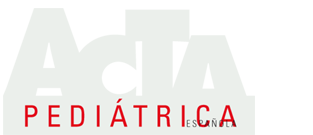Resumen
Introducción: La patología infecciosa es un motivo de consulta muy frecuente. Distinguir entre infecciones bacterianas y víricas es un reto que ocasiona tratamientos antibióticos inapropiados.
Nuestro objetivo fue estudiar la fiabilidad de la PCT, la PCR y el recuento de leucocitos y neutrófilos totales para diferenciar infecciones en pacientes hospitalizados.
Métodos: Estudio retrospectivo unicéntrico en el que se revisaron las historias clínicas de los mayores de 3 meses ingresados con infección confirmada por cultivo o PCR viral, desde el 1 de enero hasta el 31 de diciembre de 2016 en el servicio de pediatría de un hospital de primer nivel. Se dividieron en función de si la etiología comprobada de su infección era bacteriana o vírica.
Resultados: Se identificaron 328 pacientes, con una media de edad de 2,3 años y DE= 3,5; el 40,2% presentó una infección bacteriana y el 59,8% una vírica. Los primeros presentaron cifras mayores de leucocitos, neutrófilos totales, PCR y PCT que los segundos, con diferencias estadísticamente significativas (p <0,05).
En las curvas ROC del modelo predictivo, el ABC para leucocitos fue de 0,58, neutrófilos 0,55, PCR 0,6 y PCT 0,59.
Con la regresión logística se obtuvieron unas fórmulas de predicción de infección bacteriana significativas combinando valores de PCR y leucocitos en sangre pero con una R cuadrado de 0,107 y un ABC de 0,665. Se evaluaron las pruebas diagnósticas para niveles de PCR superiores a 7 mg/dL con una sensibilidad del 49%, una especificidad del 77%, un VPP del 56% y un VPN del 69%.
Conclusiones: Los instrumentos analíticos de la práctica clínica habitual son poco fiables para distinguir entre infecciones bacterianas y víricas. Sería recomendable elaborar modelos predictivos que tengan en cuenta valores analíticos y clínicos. Será útil el empleo de técnicas diagnósticas como la PCR para virus respiratorios.
Abstract
Introduction: Infectious pathology is a common cause of paediatric consultations. The aim of this study was to analyse the usefulness of CRP, PCT levels, leukocytes and absolute neutrophils counts, to differentiate between bacterial and viral infections in hospitalized children, with the purpose of avoiding a high percentage of unnecessary antibiotic prescriptions.
Methods: A retrospective study was conducted on children older than 3 months, admitted to the hospital paediatric service, with confirmed infection by positive culture or viral CRP. We reviewed the data of the clinical histories from January 1 to December 31, 2016. Patients were divided into two groups depending on whether the proven aetiology of their infection was bacterial or viral.
Results: A total of 328 patients were included, with a mean age of 2.3 years, SD= 3,5, of which 40.2% had a confirmed bacterial infection and 59.8% had a viral infection. Patients with confirmed bacterial infection had higher levels of leukocytes, total neutrophils, CRP and PCT than patients with viral infections, there being statistically significant differences in these variables (p <0.05).
Regarding the ROC curves performed in the predictive model, the AUC for leukocytes was 0.58, for neutrophils 0.55, for CRP 0.6 and for PCT 0.59.
With the logistic regression, some prediction formulas for bacterial infection were obtained that were only significant combining the values of CRP and leukocytes in blood, but with a coefficient of determination (r2) of 0.107 and an AUC of 0.665. Diagnostic tests were also evaluated for CRP levels higher than 7 mg/dL with a sensitivity of 49%, a specificity of 77%, as well as a PPV of 56% and a NPV of 69%.
Conclusions: The analitic techniques used in the routine clinical practice are unreliable to distinguish between bacterial and viral infections. Therefore, it would be advisable to develop predictive models of bacterial infection that take into account both analytical and clinical values. It would also be useful to use, in routine clinical practice, diagnostic techniques such as CRP for respiratory viruses.














